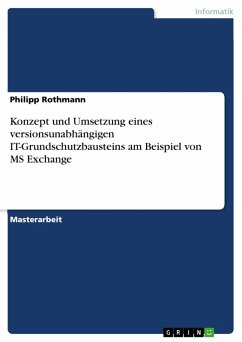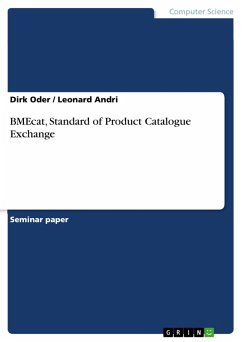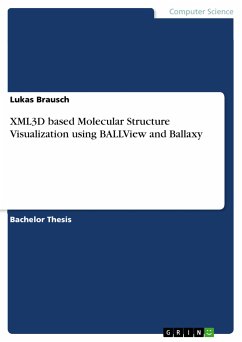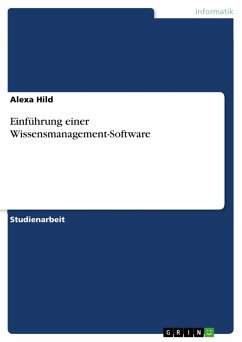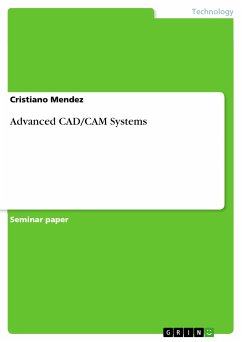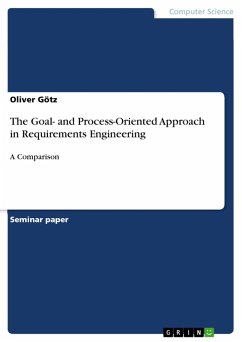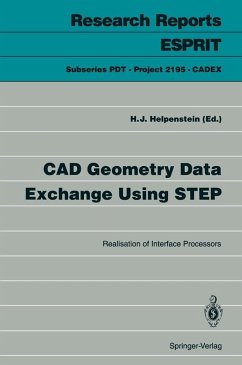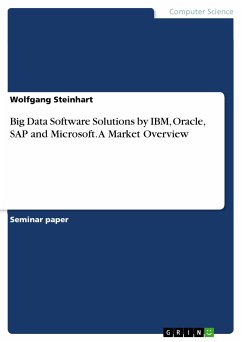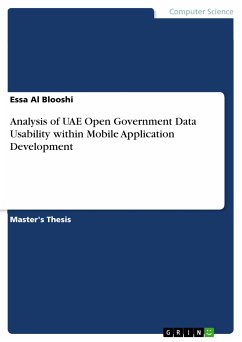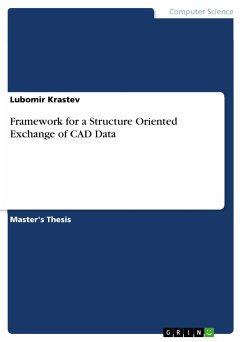
Framework for a Structure Oriented Exchange of CAD Data (eBook, PDF)

PAYBACK Punkte
0 °P sammeln!
Master's Thesis from the year 2002 in the subject Computer Science - Applied, grade: 2,3 (B), Technical University of Berlin (Institute for Machine Tools and Factory Management (IWF)), language: English, abstract: Integration of a CAx (Computer Aided x) system throughout the product life cycle and among different enterprises is a major issue for industrial competitiveness and collaboration. One of the main successful factors for CAx system integration is efficient methodology for EPDE (Engineering Product Data Exchange). Data exchange is the totality of establishing the approach for and the su...
Master's Thesis from the year 2002 in the subject Computer Science - Applied, grade: 2,3 (B), Technical University of Berlin (Institute for Machine Tools and Factory Management (IWF)), language: English, abstract: Integration of a CAx (Computer Aided x) system throughout the product life cycle and among different enterprises is a major issue for industrial competitiveness and collaboration. One of the main successful factors for CAx system integration is efficient methodology for EPDE (Engineering Product Data Exchange). Data exchange is the totality of establishing the approach for and the successful achievement of the transfer of data between two distinct CAx systems. Problem Statement: - Why does an exchanged CAD (Computer Aided Design) model lose some modelling properties? - Especially losses such as model tree (design intent) and features. - What reasons influence that phenomenon? - How can these losses be minimized? 2. Review state of the art of exchange strategies The review of exchange strategies is focused on which existing approaches are in use today, which capabilities are supported by them, which deficiencies they have, an understanding of state of the art is a precondition for beginning to deal with of the problem statement. 3. Analysis of modelling capabilities regarding feature modelling and structure representation The analysis begins with a short review of existing feature modelling techniques, which will build up a framework for the analysis process. Three CAD systems are analysed - Pro/Engineering, I-DEAS and UniGraphics. Typical models, with the frequently occurring features, are reviewed depending on the feature modelling method and structural representation. 4. Needs-identification The results of the analysis of modelling capabilities lead to the improvement of new methods and techniques. This defines the essential basis for the building of a concept framework. 5. Requirement definitions - How can the model-tree to be exchanged? - How will the exchanged model-tree act? 6. Outline of the thesis The material is organized in three major sections. The first one, the state of the art, examines the fundamentals of exchange approaches, the current state of scientific and commercial exchange approaches and further related technologies. The second one, presents the current state of feature modelling techniques and analyses of three commercial CAD systems according to feature modelling capabilities and structural representation. The next section, the concept framework, designs a concept framework fitting the requirement definitions.
Dieser Download kann aus rechtlichen Gründen nur mit Rechnungsadresse in A, B, BG, CY, CZ, D, DK, EW, E, FIN, F, GR, HR, H, IRL, I, LT, L, LR, M, NL, PL, P, R, S, SLO, SK ausgeliefert werden.




